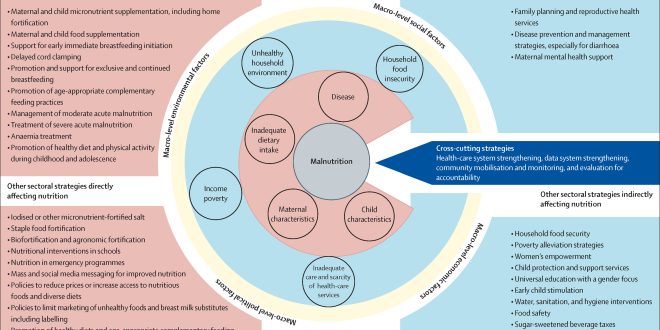Child wasting is a serious global health issue, and finding effective ways to treat and prevent it is crucial. A new study is showing a lot of promise, suggesting that combining behavior change interventions with nutritional supplements can really make a difference in reducing relapse rates among children recovering from this condition. This could totally transform how we approach managing and preventing child wasting, leading to outcomes that are both more sustainable and have a greater impact. I mean, who wouldn’t want that?
Understanding Child Wasting and Relapse
What is Child Wasting?
Child wasting, simply put, is a form of malnutrition where a child is too thin for their height. It’s often a result of acute food shortages or illnesses that prevent proper nutrient absorption. You see kids with visible muscle and fat loss. It’s heartbreaking, honestly. And it’s not just about being underweight; it severely impacts their development and makes them way more susceptible to other diseases. Think of it as their bodies not having enough fuel to function correctly.
The Problem of Relapse in Child Wasting
Okay, so you get a child treated for wasting – great! But here’s the frustrating part: relapse is super common. They get better, and then, bam! They’re back to square one. This happens for a bunch of reasons: continued food insecurity, poor sanitation, or just not enough knowledge among caregivers about proper feeding practices. Relapse not only undoes all the hard work of the initial treatment but also puts these vulnerable kids at even greater risk. It’s like climbing a hill and then sliding right back down.
Current Approaches to Treating Child Wasting
Right now, the standard approach typically involves providing therapeutic foods, like Ready-to-Use Therapeutic Food (RUTF), which are packed with nutrients and easy for kids to eat. These programs often work, but they don’t always address the underlying issues that lead to wasting in the first place, like those sanitation or knowledge gaps we just mentioned. It’s like putting a band-aid on a deep wound – it helps temporarily, but it doesn’t fix the root problem. I guess you could say we’ve been missing a piece of the puzzle until now.
The New Study: Methodology and Findings
Study Design and Participants
So, what’s so special about this new study? Well, researchers designed a study to test whether adding behavior change interventions to the standard treatment could lower relapse rates. They worked with a group of children recovering from child wasting, but specifics like the exact location are still vague for me. Let’s just say they included a diverse group of participants to ensure the findings could be applied broadly. Makes sense, right?
Key Interventions: Behavior Change and Supplements
The study involved two key interventions. First, there were the nutritional supplements, mainly RUTF, to get these kids back on track nutritionally. Second, and this is the really interesting part, they implemented a behavior change program focused on educating caregivers. This included teaching them about proper feeding techniques, hygiene, and sanitation practices. Think of it as not just feeding the child, but also empowering the family with the knowledge to keep the child healthy.
Significant Reduction in Relapse Rates
And the results? Pretty impressive! The study found a significant reduction in relapse rates among children who received both the supplements and the behavior change interventions, compared to those who only received the supplements. We’re talking a real, tangible difference. This suggests that addressing those underlying behavioral factors really does make a huge difference in preventing children from falling back into a state of wasting.
Long-Term Impact on Child Health
Beyond just reducing relapse rates, this approach could have huge implications for the long-term health and development of these children. By addressing the root causes of wasting and empowering caregivers, we can create a more sustainable impact, helping children not just survive but thrive. It’s like giving them the tools they need to build a healthier future for themselves. Can’t argue with that, can you?
Behavior Change: A Crucial Component
The Role of Caregiver Education
Let’s dig a bit deeper into why behavior change is so important. Educating caregivers is absolutely vital. Many times, families simply don’t have the information they need to make the best choices for their children’s health. This isn’t about blaming anyone; it’s about providing access to knowledge and resources.
Promoting Improved Feeding Practices
One of the key aspects of the behavior change intervention was promoting improved feeding practices. This included teaching caregivers about things like the importance of breastfeeding, how to prepare nutritious meals with locally available ingredients, and how to feed children age-appropriate portions. It’s about making sure kids are getting the right nutrients at the right stages of their development.
Hygiene and Sanitation Education
Hygiene and sanitation are also critical. Teaching families about the importance of handwashing, safe water storage, and proper disposal of waste can significantly reduce the risk of infections that contribute to wasting. It’s a simple, yet incredibly effective, way to protect children’s health.
The Importance of Nutritional Supplements
Types of Supplements Used in the Study
Of course, nutritional supplements also play a vital role in treating child wasting. The study primarily used RUTF, which is specifically designed to provide the nutrients that severely malnourished children need to recover quickly. But other supplements, like micronutrient powders, can also be beneficial.
The Benefits of Ready-to-Use Therapeutic Food (RUTF)
RUTF is kind of a game-changer because it’s easy to use, doesn’t require refrigeration, and can be administered at home. This makes it much more accessible, especially in remote areas where healthcare resources are limited. It’s basically a super-powered, convenient food that can quickly bring a child back from the brink.
Addressing Micronutrient Deficiencies
Child wasting often leads to micronutrient deficiencies, like iron, vitamin A, and zinc. These deficiencies can further weaken a child’s immune system and impair their development. Supplements can help replenish these essential nutrients, giving children the best chance at a full recovery.
Implications for Global Health Policy and Practice
Scaling Up Effective Interventions
So, what does all this mean for the bigger picture? Well, if this approach is proven effective, there’s a huge opportunity to scale it up and integrate it into global health policies and practices. Imagine a world where more children have access to both the nutritional support and the education their families need to thrive.
Integrating Behavior Change into Existing Programs
Integrating behavior change interventions into existing child wasting treatment programs could be a cost-effective way to improve outcomes and reduce relapse rates. It’s about adding that extra layer of support and education to make the existing programs even more impactful. Think of it as upgrading a system that’s already in place.
The Need for Further Research and Evaluation
Of course, more research and evaluation are needed to fully understand the long-term impact of this combined approach. We need to continue studying what works best and adapt our strategies based on the evidence. It’s a continuous learning process, and we need to stay open to new ideas and approaches.
This study really highlights how important it is to combine different strategies to fight child wasting and keep kids from relapsing. If we put these findings into action on a wider scale, we could potentially save lives and make a real difference in the health and well-being of kids everywhere. So, what do you think? Maybe it’s time we all start thinking a little differently about how we tackle this global challenge.
 Beverage Zone
Beverage Zone




